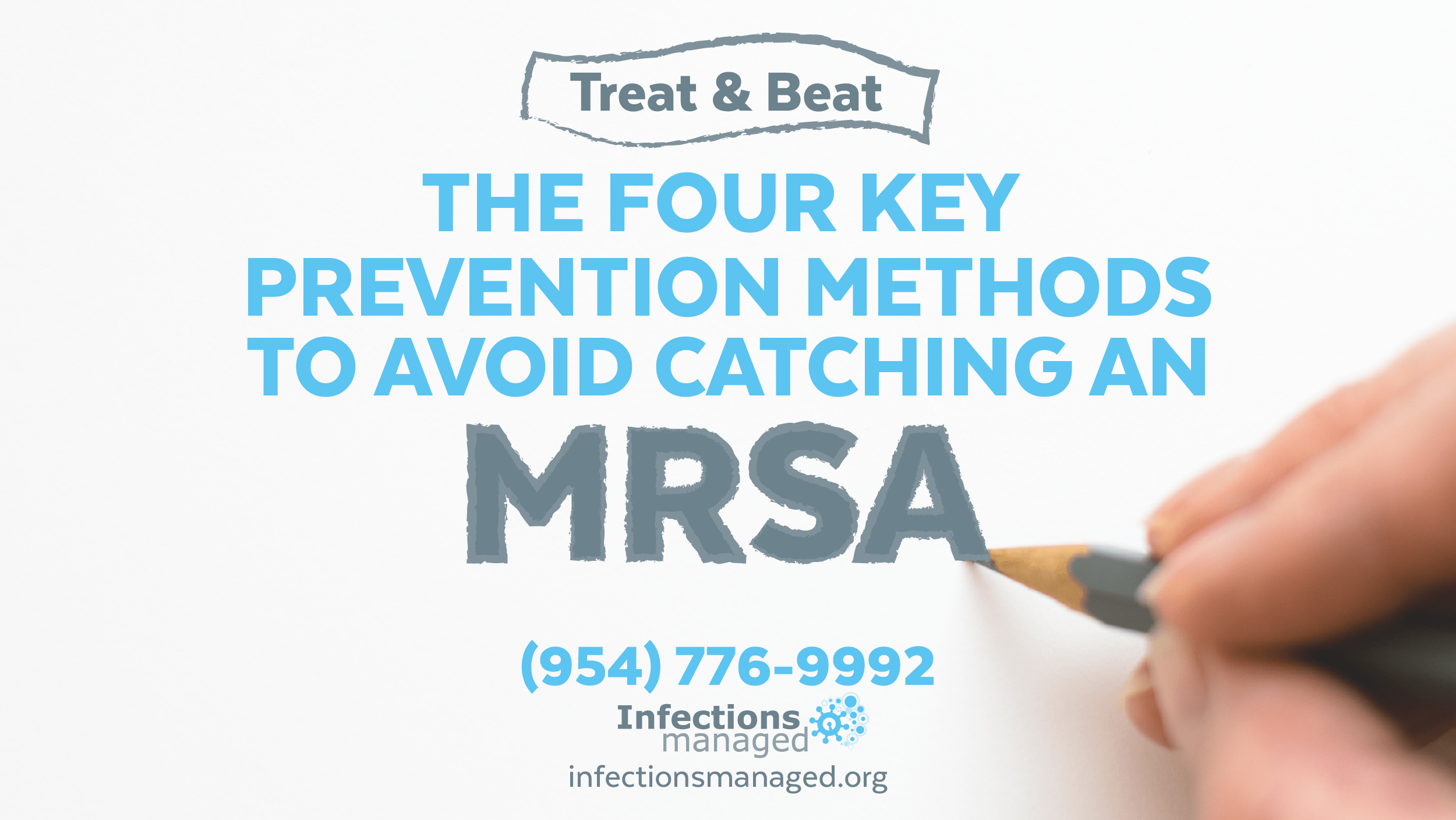What is MRSA?
MRSA stands for methicillin-resistant Staphylococcus aureus. It is a specific type of staph infection where the bacteria, Staphylococcus aureus, has become immune to many standard antibiotics used to treat normal staph infections. MRSA displays similar symptoms to other types of staph infections on the skin.
Staphylococcus aureus commonly lives on the skin or in the mouth / nose. It can remain dormant and not present any issues, however, upon entering the body it is able to cause infection. This is likely to happen in one of two settings, as discussed below.
Health Care Associated MRSA (HA-MRSA)
MRSA infections frequently occur among patients with weakened immune systems in hospitals. Infections in this setting are often associated with health care procedures that allow bacteria to enter the body, such as a surgical wounds and intravenous tubing. It can also be spread through poor hygiene practice in hospitals. The vast majority of invasive MRSA infections occur in this setting.
Community Associated MRSA (CA-MRSA)
MRSA that spreads from person-to-person, outside a health care setting, through contact with someone who is colonised with MRSA. Possible factors that increase the risk of CA-MRSA include; regular skin to skin contact (sports), contaminated surfaces, regular injection of drugs and living in a densely populated environment (prison, military bases etc). CA-MRSA is less common than HA-MRSA.
MRSA Diagnosis
It is believed around a third of people carry Staphylococcus aureus bacteria in their nasal cavity, with 2% of people carrying MRSA. Doctors diagnose MRSA by taking a nasal swab or tissue sample and sending it to a lab. This is then combined with nutrients that encourage bacterial growth and determine signs of drug resistant bacteria
MRSA Symptoms
Symptoms tend to begin with a swollen bump or boil on the surface of the skin at the site of the infection, also known as an MRSA rash. It is warm to the touch and often accompanied with a fever. More severe infections can lead to pneumonia and infections of the blood stream.
Implications of having HIV alongside MRSA
Research by Douek et al., 2016, found that people with HIV are at an increased risk of contracting CA-MRSA. In fact, a meta study including 32 studies between 1990 and 2013 concluded that individuals with HIV may be 6 – 18 times more vulnerable to MRSA. If you are HIV positive and suspect you may be showing early stage symptoms of MRSA, please don’t hesitate and see your infectious disease doctor to get tested!
How do you Boost you Immune System?
As mentioned earlier, you may be more susceptible to MRSA infection if your immune system is compromised. Staph aureus latches on to varying types of human tissue and has a unique ability to avoid the body’s natural immune response. So how can we combat this?
Research strongly suggests that high doses of vitamin B3 is an effective way to boost our immune systems and fighting off bacterial infections such as MRSA. Vitamin B3 triggers a gene called neutrophils, the most abundant white blood cell found in mammals.
How is MRSA Treated?
An MRSA infection is often harder to treat than other staph injections due to a reduced number of affective antibiotics. That being said it is still treatable. Your doctor will need to take a swab from an effected site on your body to determine which antibiotic should be given. In some cases your doctor may also need to drain the boil. Severe infection MRSA in the bloodstream requires intravenous antibiotics, this is given until the individual is showing signs of improvement
Common antibiotics you doctor may prescribe for MRSA treatment include; tetracycline, clindamycin, vancomycin, trimethoprim-sulfamethoxazole, rifampin or linezolid.
The recovery period for those taking medication at home usually involves a 7 to 10 day course of antibiotics.
Did you know?
Before displaying symptoms, MRSA can lay dormant without displaying any signs. A study by Neely & Maley, 2000 set out to find exactly how long Staphylococcus can survive on commonly found surfaces within hospitals. The surface and corresponding survival time can be seen below.
- Polyester (Curtains, Clothing & Privacy Drapes): 1 – 40 days
- Polyester Blend (Lab Coats & Clothing): 1 – 3 days
- Polypropylene (Splash Aprons): 40 – 51+ days
- Terry Cotton (Wash Clothes & Towels): 2 – 14 days
- Smooth Cotton (Clothing): 4 – 21 days
Treat & Beat. We are here to help you! 💪
Call us to make an appointment: (954) 776-9992 or go online at infectionsmanaged.org
#mrsa #whatismrsa #mrsadisease #mrsainfection #mrsarash #mrsasymptoms #mrsatreatment #staph aureus #staphylococcus #staphylococcusaureus

